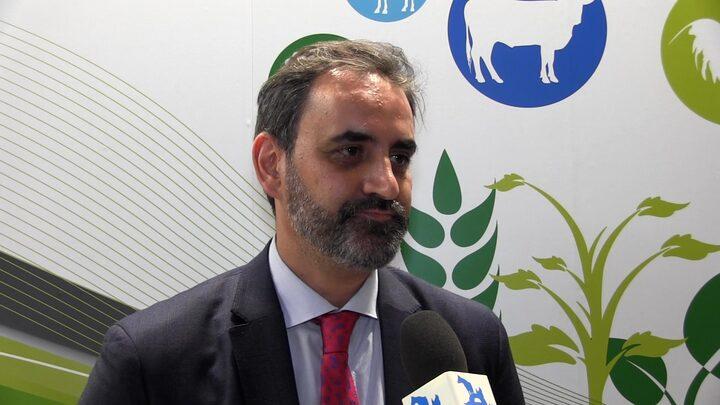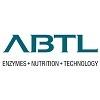Check out what is new in Poultry Industry
Find the best technical articles, forums, and videos on Poultry Industry at Engormix. Enter now and interact with the world's largest agricultural social network.
...
Comments : 1
Recommendations: 0
...
Comments : 0
Recommendations: 3
...
Comments : 1
Recommendations: 1
.mp4&w=3840&q=75)
Sandro Cerrate (Credinser) explains the benefits of doing it with a device that measures the breast angle instead of following the traditional manual method....
Comments : 3
Recommendations: 2
The common bed bug (Latin name Cimex lectularius) is part of a group of blood-feeding parasites called Cimicids. The common bed bug was mostly eradicated in North America in the 1960s. Then, in the 1990s, large cities such as New York, Chicago, Cincinnati, Toronto, Montreal and Winnipeg saw a rise in bed bug infestations that spread throughout the U.S....
Comments : 1
Recommendations: 1
Chickens make different sounds for a plethora of reasons. Determining the reasons behind vocalizations and understanding how chickens use them is a great way to gain insight about their behavior. Some of the most common chicken vocalizations are: A rooster's crow A hen's "food call" Alarm calls A hen's post laying...
Comments : 1
Recommendations: 1
This newsletter provides an overview of silvopasture-based poultry production, and potential benefits and challenges of adopting this system as a largescale or small-scale producer. Silvopasture is an agroforestry practice in which trees, forages, shrubs, and animals are intentionally integrated into a single land...
Comments : 3
Recommendations: 2
This newsletter provides an overview of the anatomy of the keel bone, risk factors and welfare implications associated with keel fractures, how to assess keel bone integrity, and management strategies to mitigate keel fractures in laying hens. ...
Comments : 0
Recommendations: 0


Veterinary APIs Market Update: Price Trends & Key Insights – February 2025
Suggested link
1. Introduction Poultry and fish are both increasing in popularity as protein sources in human diets. Fish consumption has increased by 122% between 1990 and 2018 [1] with an over 500% rise in aquaculture production globally over the same timescale. Salmon production is estimated to reach 2.7 million tonnes (MT) by 2021, compared to 0.8 MT in 2000 [2]. Similarly, poultry meat production is also increasing year on year and is predicted to have reached 137 MT in 2020 [1]. This...
Comments : 0
Recommendations: 0
1. Introduction Effective functionality and health of the gastrointestinal tract (GIT) are important factors in determining animal performance [1]. These aspects are particularly relevant in poultry farming, where animals capable of growing rapidly within a short period of time are needed. Three components of gut health have previously been suggested: diet, mucosa (which is, in turn, characterized by the digestive epithelium, the gut-associated lymphoid tissue and the...
Comments : 1
Recommendations: 0
Soybean meal (SBM) is an ingredient with a high digestibility of protein, Lys, and Met. An optimal heating process of SBM is required to eliminate antinutritional components that negatively interfere with digestion, absorption, and metabolism of nutrients. The effect of 3 commercial SBM batches were subjected to different heat treatments to evaluate its effect on growth performance and intestinal integrity. A total of 1,860 male Cobb 500 broiler chicks were vaccinated at 1d of age with a...
Comments : 0
Recommendations: 1
INTRODUCTION Leucine (Leu) is a branched-chain amino acid (BCAA) that is essential for poultry species. It is one of the most potent amino acids regarding its effects on protein synthesis and degradation, energy balance regulation, modulation of insulin secretion, a nitrogen donor for muscle production and a critical regulator to initiate the translation and protein synthesis (Antony et al. , 2002; Norton et al. , 2006; Wu, 2009). Leu acts as a signal that...
Comments : 0
Recommendations: 1
Introduction The basic nutrients that poultry birds require for maintenance, growth and reproduction include carbohydrates, proteins, minerals and vitamins. The energy and protein are the most important as well as expensive nutrients in poultry diet. Maize and soyabean meal are the conventional feed ingredients commonly used in poultry industry because of its nutrients composition and digestibility. In recent year skyrocketing prices of conventional protein sources like soyabean...
Comments : 7
Recommendations: 2
Swine dysentery (SD) caused by Brachyspira hyodysenteriae is a highly contagious disease of grower and finisher pigs. SD causes severe mucohemorrhagic diarrhea, resulting in decreased feed efficiency and increased morbidity. Necrotic enteritis (NE) caused by Clostridium perfringens is characterized by high mortality in poultry with bloody diarrhea, and sudden death. B. subtilis and B. licheniformis have been identified from the gastrointestinal tract of...
Comments : 0
Recommendations: 0
1. Introduction Mycoplasma synoviae (MS) and Mycoplasma gallisepticum (MG) are the most important Mycoplasma species for commercial poultry in Mexico. For decades, these species have been recognized as the cause of chronic respiratory disease (CRD) [1–3]. In addition, they decrease the fertile egg production in broiler breeders, cause late-stage embryonic death, or result in the births of infected chicks that later develop CRD. This disease suppresses the innate...
Comments : 1
Recommendations: 0
The term “postbiotic” is increasingly found in the scientific literature and also on the commercial products over the last few years. But the scientific community is not yet united on what falls into this category. As the term is new and found increasingly popular, the correct idea about it should be...
Comments : 0
Recommendations: 2
INTRODUCTION Avian embryogenesis is a perfect platform to examine the effects of exogenous factors on embryonic development due to the physiological independence from the hen (Hill et al., 2004). During incubation, the management of cabinet temperature, humidity, egg turning and air composition are critical to achieving successful artificial incubation. Light is an important exogenous factor for controlling many physiological and behavioral processes in animals but the use of...
Comments : 0
Recommendations: 0
INTRODUCTION The rapid growth of modern broilers in a relatively short period of time requires a parallel increase in the size or capacity of supply organs, such as those of the cardiovascular and respiratory systems. However, due to the slower development of these organs relative to body growth rate, the capacity to balance body energy is compromised, particularly under extreme environment conditions, such as cold stress (Shahir et al., 2012; Shinder, 2002). Cold...
Comments : 0
Recommendations: 1
INTRODUCTION Ascites or pulmonary hypertension syndrome (PHS) is one of the main causes of mortality in modern broilers. It is estimated that ascites incidence may be as high as 20% of total mortality in broilers [1]. Due to selection for rapid growth, broiler chickens have a high metabolic rate and hence higher oxygen requirements. However, they have a marginal capacity of lung and cardiovascular systems to supply their high oxygen demand. This results in impaired ability to...
Comments : 0
Recommendations: 0
Poultry products are the primary vehicle for broad-host, nontyphoidal Salmonella enterica contamination and foodborne disease in the United States 1,2 , causing 1.35 million infections and costing approximately $400 million annually3. Although extensive efforts have been made to minimize Salmonella incidence in poultry via antimicrobials, the spread of resistance genes has caused an emergence of Salmonella isolates resistant to essential antibiotics 3,4 . Furthermore, live...
Comments : 0
Recommendations: 0


.jpg&w=3840&q=75)


.jpg&w=3840&q=75)


























